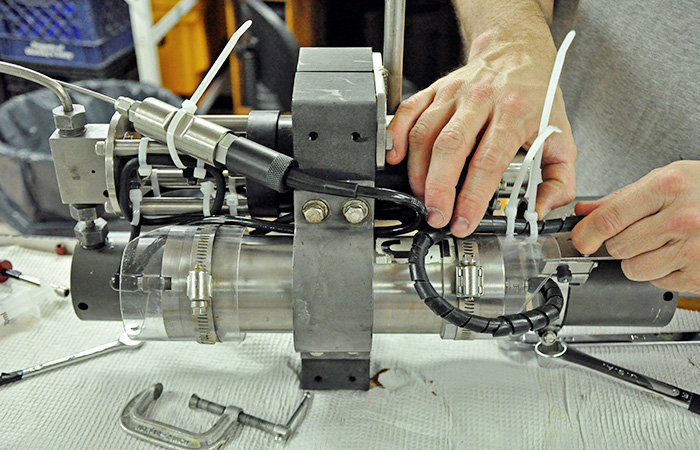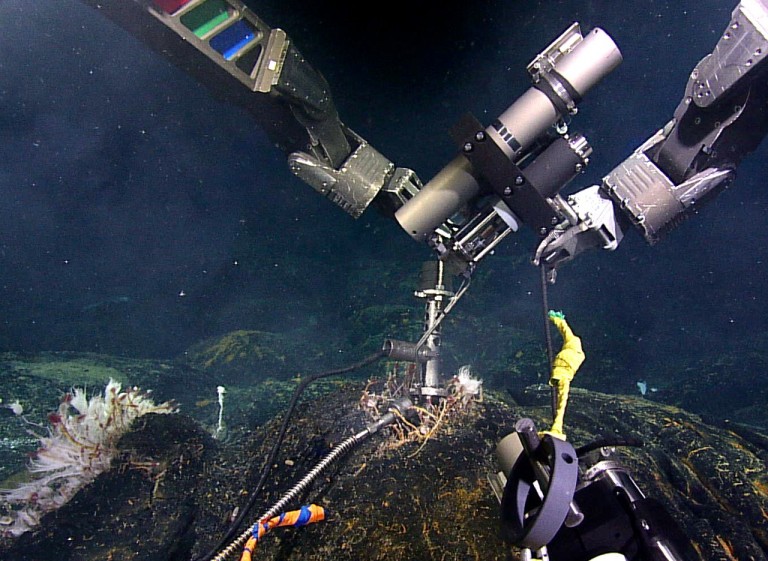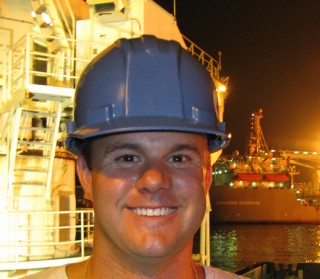The hydrothermal vents that we study here at the Lau Basin, and all around the world, are what any right-minded person would consider a “hostile work environment.” Water, at 360o C (680o F) or higher, constantly flows out of these impressive, sometimes 30m tall, chimney structures. Many of the fluids are quite acidic, at pH 3 or lower, with all types of dissolved metal and gases. Not to mention the crushing 220 bar (3200PSI) pressure all around. That’s 217 times atmospheric pressure! Talk about requiring hazard pay; you couldn’t pay me enough to go down there unassisted – mainly due to the guarantee of instant death.
Relatively small amounts of hydrogen, methane, hydrogen sulfide and CO2 are dissolved in these fluids and kept there by the high pressure. So how do you fill a soda can at 360oC, and 220 bar, with a pH of 3 and safely bring it on deck and open it but not let any of the carbonation out?

Our lab uses, purpose-built, titanium fluid samplers called Isobaric Gas Tight samplers, or IGT’s. These samplers can handle the high temperature and very acidic nature of these fluids. And they are able to keep the fluids at sea floor pressure (220 bar) thereby keeping the gases inside dissolved.
On a dive, we place the snorkel on the IGT in the flow of the hydrothermal vent we wish to sample. We are able to communicate to the IGT’s through a magnetic “modem.” We have two coils of wire, one on ROPOS and one connected to the IGT, encased in epoxy and look like paddles. The coils are wound such that when a signal is passed through one coil, it makes the other coil react due to the magnetic field the first one creates. By varying the signals sent we can send data and command back and forth between the IGTs and the control room.

With this we can measure real-time temperature so we know we are in the hottest part of the flow. Once we are satisfied, we trigger a button in our software that opens a valve and lets the ambient pressure slowly move a two pistons, filling the IGT with about 150mls of hot, gassy hydrothermal fluid.
Once back on the surface we can connect the IGT’s to a high pressure pump and push the two pistons back, forcing the fluid out through the valve we opened to fill them. If we pump at the same pressure as at the seafloor, we can, in fact, open the soda can and extract the contents without letting the “bubbles” out. This time instead of a snorkel we have installed a titanium metering valve that allows us to control the flow coming out and keep all the gases dissolved in the fluid for analysis.
So who cares right? You may be thinking, once I open the soda can I get bubbles but what I really want is the soda. Well, the bacteria that live inside many of the deep sea biota care. They use hydrogen and hydrogen sulfide as food, in much the same way as plants use sunlight to make food. It’s all about moving electrons around. But in the deep there is no sunlight. If we have a better understanding of the fluid chemistry, we can target experiments that encourage the life that uses them and better understand the deep-sea food web.
All with a very sophisticated “soda can.”

